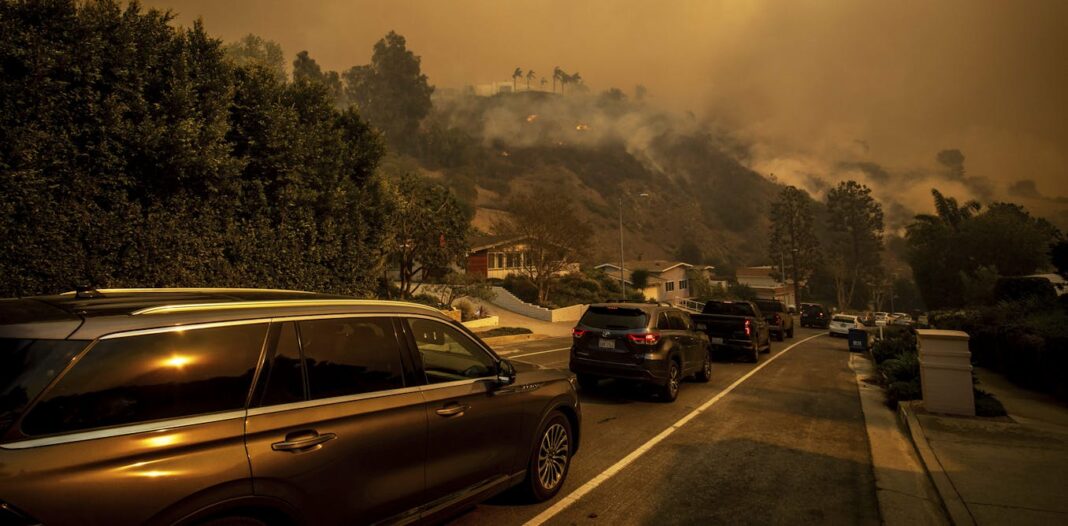Elevated levels of metals and VOCs
When wildfires spread into neighborhoods, they burn all kinds of materials found in cars and houses and everything around them – electronics, paint, plastics, furniture. Research shows that the mix of chemicals released when human-made materials like these burn is different from what is emitted during a vegetation fire and is potentially more toxic. The smoke and ash can blow under doors and around windows in nearby homes, bringing in chemicals that are absorbed into furniture, walls and other indoor surfaces and continue off-gassing for weeks to months.
Health implications for residents
In 2021, after the Marshall Fire swept through neighborhoods near Boulder, Colorado, my colleagues and I at Colorado universities and labs heard from many residents who were worried about the ash and lingering smells inside their homes that had otherwise survived the flames. In homes that my colleagues were able to quickly test, they found elevated levels of metals and PAHs – polycyclic aromatic hydrocarbons – in the ash. We also found elevated VOCs – volatile organic compounds – in airborne samples. Some VOCs, such as dioxins, benzene, formaldehyde and PAHs can be toxic to humans. Benzene is a known carcinogen.
Courtesy of Joost de Gouw
Lingering symptoms and questions
There are a still a lot of unanswered questions about the health risks from smoke- and ash-damaged homes. For example, we don’t yet know what long-term health implications might look like for people living with lingering gases from wildfire smoke and ash in a home. We found a significant decline in the number of people reporting symptoms one year after the fire. However, 33% of the people whose homes were affected and responded to a later survey still reported at least one symptom that they attributed to the fire. About the same percentage also reported at least one symptom two years after the fire.
Tips to protect yourself after wildfires
Wildfires are increasingly burning homes and other structures as more people move into the wildland-urban interface, temperatures rise and fire seasons lengthen.
If your home survives a wildfire nearby, here are some steps to think about before starting to clean:
- Vacuum floors, drapes and furniture. A recent scientific study documents how cleaning all surfaces within a home can reduce reservoirs of VOCs and lower indoor air concentrations of VOCs. Once the air outside has cleared, open windows to let clean air in.
- Keep people with heart or lung diseases, older adults, pregnant women, children and pets away from cleanup activities.
- Use a HEPA air purifier to remove particles and VOCs from the air.
- Open windows and doors to ventilate the home.
- Use a mask when cleaning to avoid inhaling particles and VOCs.
- Check and replace air filters in your home regularly.
- Consider hiring a professional to clean and decontaminate your home if you are not comfortable doing it yourself.
Conclusion
In conclusion, the health risks from smoke- and ash-damaged homes are a serious concern. The chemicals released during the burning of human-made materials can be more toxic than those from vegetation fires, and can linger in the home for weeks or months. It is essential to take steps to protect yourself and your home from these risks. By understanding the health implications of smoke- and ash-damaged homes, we can work to mitigate the effects of wildfires and ensure a safer and healthier environment for all.
FAQs
Q: What are the health risks from smoke- and ash-damaged homes?
A: The health risks include exposure to toxic chemicals, particles, and VOCs, which can cause a range of symptoms, including headaches, respiratory problems, and other health issues.
Q: How can I protect myself from the health risks of smoke- and ash-damaged homes?
A: You can protect yourself by taking steps to clean and decontaminate your home, using personal protective equipment, and avoiding activities that could stir up ash or particles.
Q: How long do the health risks from smoke- and ash-damaged homes last?
A: The health risks can last for weeks or months, depending on the severity of the damage and the effectiveness of the cleanup efforts.
Q: What should I do if my home is damaged by a wildfire?
A: If your home is damaged by a wildfire, you should take immediate action to protect yourself and your home. This includes wearing personal protective equipment, avoiding activities that could stir up ash or particles, and seeking medical attention if you experience any health symptoms.




